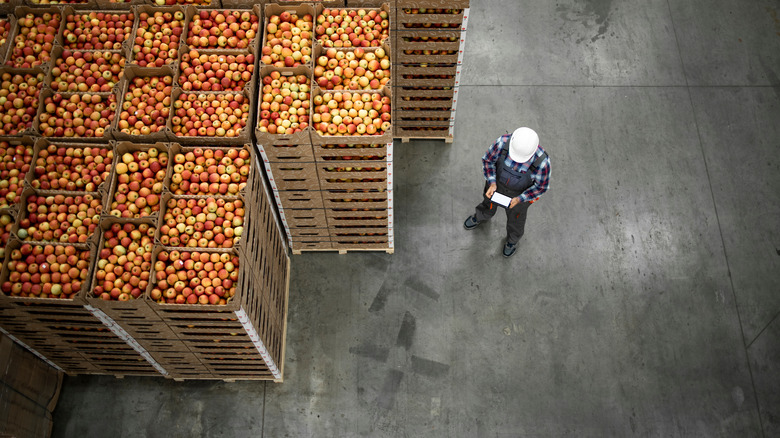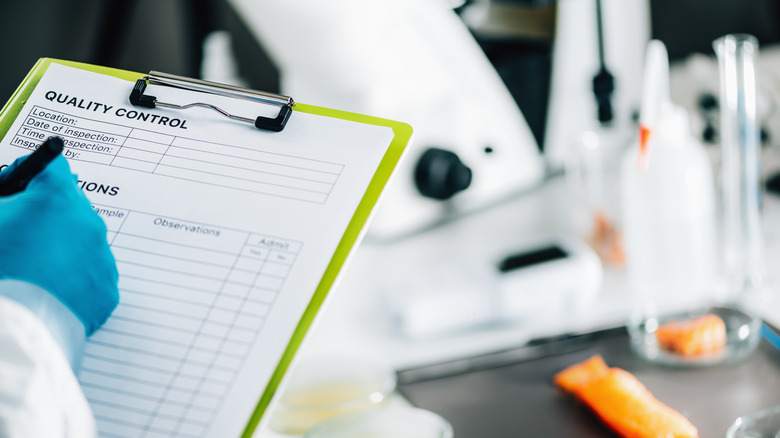How The FDA Plans On Making Some Foods Easier To Trace
It's been a big year for foodborne illness. Last month, a batch of Vidalia onions were recalled by the FDA after it was found that they contained listeria. Jif Peanut Butter and the brands associated with it saw a multi-state recall due to salmonella. And who could forget the deadly Dole salad listeria outbreak from last winter? Even Coors Light was recalled earlier this summer for issues related to quality.
Why have foodborne illnesses like these been able to continue undetected so often? The ugly truth is that the current food-recall system in the U.S. takes a dangerously long time. According to the U.S. PIRG, information delays and overall inefficient communication channels mean news of serious food recalls can take a long time to reach grocery shoppers. "The system is broken" it says. "Federal laws favor corporations, not consumers, and it can take months or years for the public to be warned about dangerous products." According to the CDC, 48 million people contract a food-borne illness each year, 128,000 of which are hospitalized and 3,000 of whom ultimately die.
Now, the FDA is rolling out a new rule to revolutionize food traceability and hopefully curb this epidemic of outbreaks before they can begin.
Every step in the food system will be documented
According to Food Safety News, the new rule will go into effect on November 7. Per the strict new rule, the FDA will require listed foods to be accompanied by a detailed record of origin and transportation, also including any other ingredients that have been added to or paired with them. "For example," says Food Safety News, "when a whole salmon becomes filets and then salmon cakes, each part of the process will need to trace back to the fish and the boat it came from." This would also include listing the farm on which every single fruit in a fruit salad grew.
The goal is to efficiently and consistently store data points, which will be called "Key Data Elements" (KDEs). "Critical Tracking Elements" (CTEs) will refer to data about how the food is transported and processed. Collectively, the CTEs are Growing, Receiving, and Transformation, which are then further broken down into subcategories. Growing KDEs, via the FDA, include growing area coordinates, taxonomic names of the seeds, and a lot code designated by the farmer. Receiving KDEs will include a location identifier and description, quantity, name of transporter, list of all receivers during processing, and more. (It's a big category.) Lastly, Transformation KDEs will include location and product traceability identifiers, and a summation of the total processing records.
Long story short: It's thorough — and every step is required.
The next step in curbing foodborne disease outbreak?
In its official proposition for the rule, the FDA wrote, "The proposed requirements are intended to help the Agency rapidly and effectively identify recipients of foods to prevent or mitigate foodborne illness outbreaks and address credible threats of serious adverse health consequences or death resulting from foods being adulterated or misbranded," (via the Federal Register). In particular, the list of included foods focuses on foods considered high-risk for carrying food-borne illnesses, such as crustaceans, mollusks, finfish, soft cheeses, shell eggs, nut butters, leafy greens, fresh-cut produce, pre-prepared deli salads, and more.
(per Food Safety News).
The FDA also cites the Food Safety Modernization Act (FSMA) as grounds for the new rule. The FSMA was implemented by the FDA in 2011 to help curb the outbreaks of foodborne illness as the food system globalizes on a larger scale than ever before. The FSMA maintains that "preventable foodborne illness is both a significant public health problem and a threat to the economic well-being of the food system." It also calls diligently maintaining food supply safety a "shared responsibility."
Considering this, the new rule could be a step in the right direction.


